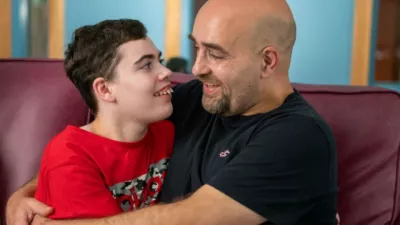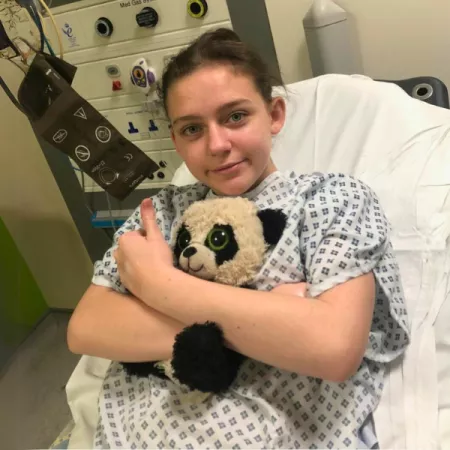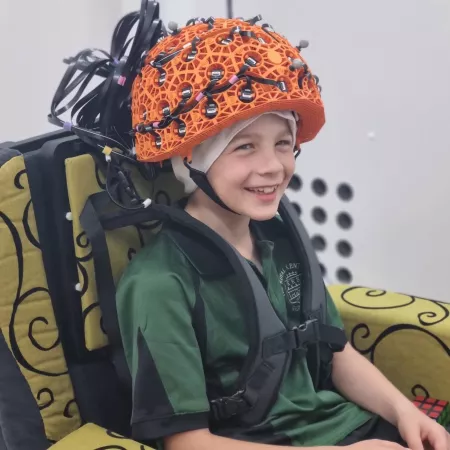Samuel is a pupil at Young Epilepsy’s St Piers School & College in Lingfield. In many ways, he’s a typical teenager—he loves sports, watching TV, and spending time hiding away in his bedroom. But Sam’s journey has been far from typical.
At just four years old, Sam was diagnosed with epilepsy. His mum, Tracy, recalls the sudden and distressing change in her son:
At the age of three, he went from being a very able child, who was starting to read, to someone who regressed very quickly. As a childcare professional, I could tell that his behaviour was unusual, but it still took us a long time to get anyone to listen properly to our concerns.
Eventually, Sam’s epilepsy was confirmed through an EEG—on his fourth birthday. Tracy recalls the experience as challenging:
It was very unsettling for Sam and getting him to sit still with wires on his head was incredibly difficult. We managed only 20 minutes instead of the full hour, and the data was incomplete. We were told, ‘He has epilepsy—don’t leave him alone, don’t go swimming, don’t do this, don’t do that.’ It was a harsh introduction.
Epilepsy diagnosis often takes place in clinical, hospital-based environments that can be intimidating and restrictive—especially for children like Sam who struggle to stay still.
While Sam did not have access to OPM-MEG, his story helps illustrate how this technology could dramatically improve the diagnostic experience for children like him.






